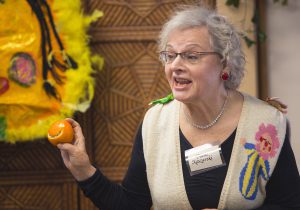Author: Ari Shavit (Spiegel and Grau/Random House, New York, 2013) Reviewed by Doris Friedensohn
Ari Shavit, the left-wing Israeli journalist, is an uncommonly brave writer. In My Promised Land (2013), he celebrates the remarkable achievements of Israelis – – in turning a Middle Eastern desert into both a refuge for the world’s persecuted Jews and a rich, modern nation. At the same time, he offers a searing critique of the historic mistreatment of Palestinians by Israelis and the state policy of Occupation of Palestinian lands. His subtitle, The Triumph and Tragedy of Israel, signals this double vision: the determination to look inward and outward, at Jews and Palestinians, at the world context for the Zionist experiment and the growth of Islamist activism, at the pervasive sense of intimidation experienced by Israelis and the destructive politics of Occupation. This balancing act is the book’s stunning achievement.
The word balance should not be mistaken for cool or detached. On the contrary, every chapter of My Promised Land is marked by intense, engaged reporting and passionate reflection. For example, Shavit begins this “personal journey through historic and contemporary Israel” in 1897 with the arrival in Palestine of twenty-one Anglo-European settlers. “Zionist pilgrims,” he calls them. Herbert Bentwich, Shavit’s great grandfather – – and an elegant, assimilated British lawyer – – was their leader. Bentwich, Shavit explains, was driven by two concerns: the dire situation of Jews in Eastern Europe and the habits of assimilation of those in the West. Neither model, he believed, offered much hope for the future of Jewish life. But Palestine, with its seemingly empty spaces, beckoned. Exploring Bentwich’s story through family documents, Shavit feels certain he would not have liked the man: he would have rejected the royalist, religious and imperial world that shaped him – – including his ancestor’s romantic yearning for Zion. Most tellingly, Bentwich and his cohort of British settlers did not see the land as it was – – or its half million Arab inhabitants. Probably, had he “seen” those Arabs in their dirt-poor villages, he would never have thought of them as people with rights, to be reckoned with. His great grandfather, Shavit concludes, “was motivated by the need not to see.” And so this analytically penetrating and seductive tale is launched.
The seventeen chronologically ordered essays, which make up this volume, (including a few published in Haaretz, The New York Review of Books, and The New Yorker), represent another kind of triumph. Each highlights a distinctive moment or significant voice in Israel’s development. For example, “Orange Grove, 1936” describes the growth of Israeli’s citrus industry (with its star product, the Jaffa orange) – – a testament to determination, agricultural ingenuity, and the cooperation between Jewish planter-owners and Arab workers – – which actually threatened California’s dominance in the field. “The Project, 1967” focuses on Dimona, the famous structure housing Israel’s nuclear reactor. As Shavit observes, Dimona gave Israel a half century of relative security and significant peace agreements. But was it right? What would happen, he asks, “when the Arabs possessed a demon of their own?” In “J’accuse, 1999,” Shavit interviews the Sephardic politician Aryeh Machluf Deri. Deri led the revolt against the dominant, secular Ashkenazi movement and became “the bearer of the cross of Oriental pain and tragedy.” The Israeli melting pot, Shavit tells us, “forged a nation” (50% by 1990 of Jews from Arab lands) “but it also scorched the identities and scalded the souls it was to have saved.”
“Talk to me, give me your hand, make me your partner,” the Palestinian Israeli lawyer Mohammed Dahla challenges Shavit. In fact, Dahla has given up on the peace process. Israelis are not interested in conciliation, he feels certain. He’s also tired of the Jewish monopoly on the term “holocaust.” “The destruction of our people,” he says, was also the destruction of our homeland.” And he adds, “This generation (of Arabs) has learned from Israeli chutzpah, impudence, cheekiness, and therefore it does not beg but demands. It does not defend but attacks.” Shavit hears it all without flinching. “I love Mohammed,” he says. . . He is one of the sharpest friends I have. We share a city, a state, a homeland.” “What will become of us?” Shavit asks. There is no anger in the question. Only sorrow and angst.
In these and many other interviews and anecdotes, Shavit remembers a simpler time in the Zionist story: a time of single-minded purpose among young, culturally homogeneous cadres of self-taught farmers and builders, secular people, devoted to creating a new socially just nation for Europe’s devastated Jewish remnant. That simpler, beloved Israel is no longer. My Promised Land is his beautifully and brutally honest effort to explain the compromised and endangered 21st century nation. Israeli grit, exemplary courage, and technical genius have built a powerful modern state. Moral blindness propelled the enterprise and continues to support it.
Will Israel survive the enemies without and the tensions within, Shavit asks? Can this tiny nation hold back the wrath of some 1.5 billion Muslims, millions of Arabs in surrounding countries, Palestinians under Occupation and within its borders? Can Israel tolerate its own fractious population, its divide between rich and poor, and its appropriation of consumerism, sexual adventuring, and escapism?
Shavit’s dark questions haunt his story. He wants an Israeli future for his teen-age children; and he evokes that future, dreamily and unpersuasively in the closing pages. He’s a man wise enough to recognize the limits of hope. Yet still he hangs on. “The Israel tale,” he writes in the final paragraph,”is a tale of vitality against all odds. . . We are a ragtag cast in an epic motion picture whose plot we do not understand and cannot grasp.”
Doris Friedensohn, professor emerita of Women’s Studies at New Jersey City University, is the author of the food memoir Eating As I Go: Scenes from America and Abroad and Cooking for Change: Tales from a Food Service Training Academy.


